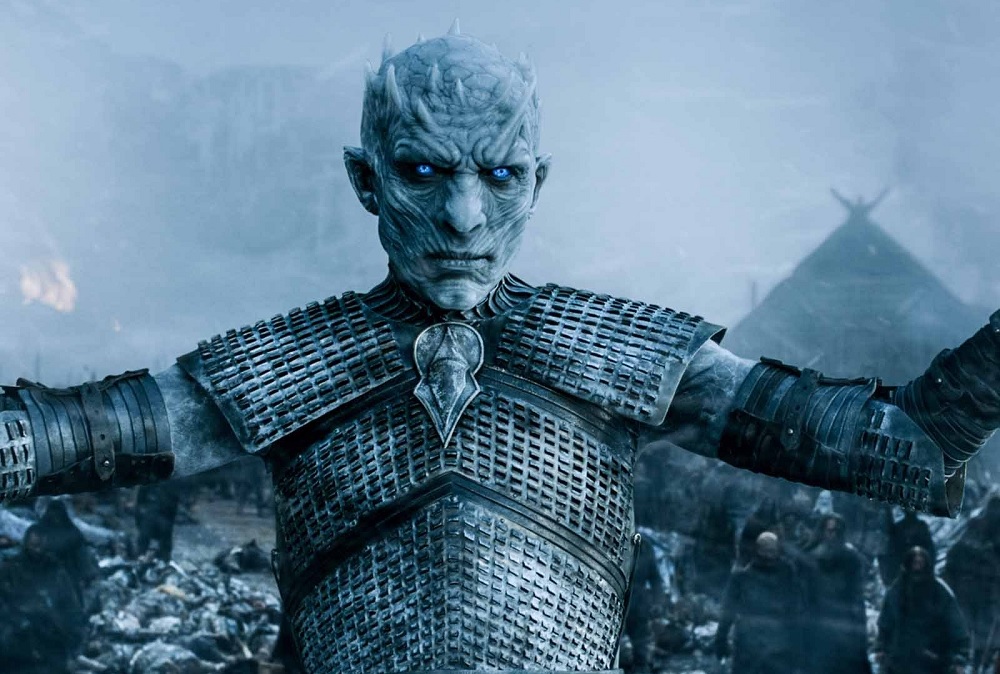5 parallels between Game of Thrones and Welsh mythology

Ifan Morgan Jones
Since JRR Tolkien first introduced us to Middle-Earth in the 1930’s modern fantasy authors have mined Welsh mythology for inspiration.
Some of the most successful blockbusters and series of the last 20 years, including Harry Potter and Game of Thrones, are all seriously indebted to Wales’ legends.
Unfortunately, this mythology hasn’t always been appreciated by the Welsh themselves, who made a conscious decision to turn their backs on it because of the way they were portrayed in the 18th and 19th century as a magical, unserious people.
This hopefully seems to be changing. I wrote the novel Dadeni, published in May, because I wanted to remind the Welsh about our own mythology. Visit Wales has also declared 2017 a Year of Legends.
This morning saw the premier of the seventh series of Game of Thrones. So, what better time to look at a few of the ways that George R.R. Martin was inspired by Welsh mythology?
5 – Winter is Coming
Geoffrey of Monmouth’s History of the Kings of Britain had a big influence on how we saw our own history until his tales were debunked in the 19th century.
It portrayed the coming of the Anglo-Saxon to Britain as punishment by God. The Britons had acted immorally and quarreled with each other, leaving themselves venerable to attack.
This, of course, has obvious parallels with the plot of Game of Thrones. As the Starks, Lannisters and Targaryen’s rip each other to shreds they’re largely oblivious to the far greater threat coming at them from the North.
There are other parallels in Game of Thrones with Britain’s history as told by Geoffrey.
The ‘First Men’ whose ancestors still populated the North in Westeros and worship the Old Gods are largely analogous to the Celts. Some continue to speak the ‘Old Tongue’.
The Andals from Essos who have taken over most the south of Westeros, bringing the ‘Common Tongue’ with them, are the Anglo-Saxons.
4 – Nature
Trees such as the oak and yew were sacred to the Celts, as they are to the First Men who still worship the Old Gods in Game of Thrones.
It’s no coincidence either than the Weirdwoos in the Godswood in Game of Thrones are white with red leaves. These are the colour of the supernatural in Welsh mythology.
When Pwyll comes across a pack of hounds at the very beginning of the Mabinogi – the Dogs of Annwn – they’re white with red ears.
The animal and tree-worshipping Children of the Forest mentioned often in Game of Thrones also have clear parallels with the Tylwyth Teg of Welsh mythology.
3 – Weird sexual relationships
Incestuous sexual relationships, rape, and people turning into animals – Game of Thrones has all three in spades.
George RR Martin has however had a hard time topping the Fourth Branch of the Mabinogi.
After Gilfaethwy rapes his uncle’s servant, the powerful sorcerer turns him and his brother Gwydion into a pair of mating animals, first a stag and hind deer, then a sow and board, and finally a wolf and she wolf.
The two brothers mate as all three animals and have three sons, Hyddwn, Hychddwn and Bleiddwn (Stag-man, Tall-piglet, and Wolf-man).
In Game of Thrones, Joffrey is born of an incestuous relationship between his mother and uncle. Several characters also have the ability to take over the bodies of nearby animals.
2 – Lyanne Stark
There are continuous references throughout the Game of Thrones books and TV series to a war that happened in the past that installed Robert Baratheon as king.
The spark that set the war off was Rhaegar Targaryen’s (Daenarys’ brother) kidnapping of Edward Stark’s sister and Robert’s significant other, Lyanne.
Robert and Ned go after her, and this causes a civil war than brings down the Targaryen’s.
Some have pointed to Helen of Troy as the obvious inspiration – the face that launched a thousand ships.
But there’s a very strong similarity to the story of Branwen ferch Llŷr in the Second Branch of the Mabinogi.
Her mistreatment by the Irish King Matholwch sets off a war with Britain. Her brothers, King of the Britons Bendigeidfran and Efinisen, set off to save her.
As with Game of Thrones, there’s a very high body count. All the main characters are dead by the end of this war between Britain and Ireland, including Matholwch, Bendigeidfran, Efnisien, and Branwen.
1 – Bran
The character of Bran Stark is the most obvious example of George RR Martin drawing inspiration from Welsh legend.
There are obvious parallels with the mythological figure of Bran, or Bendigeidfran as he’s known in the Mabinogi.
Bran in Game of Thrones develops psychic powers after being thrown out of the upper window of a castle and losing the use of is legs.
Bendigeidfran’s weak spot is also his legs and his own powers only grow stronger after he’s ‘killed’ with a spear to the foot.
Like Bran is carried around Westeros by Hodor, the Bran of Welsh mythology is carried around Britain before being buried on the White Hill (now the site of the Tower of London).
There are other characters that seem to have been inspired by Welsh Mythology.
Ramsey Bolton (played by Welshman Iwan Rheon) has a penchant for dismemberment that is very similar to Bendigeidfran’s villainous half-brother Efnisien.
The psychotic Efnisien likes nothing more than cutting ears and lips, crushing people’s heads with his bare hands, and burning small children alive.

***
As you can see, Welsh mythology has all the ingredients that have made Game of Thrones a success – war, political intrigue, violence, and sex. All we need now is for someone to commisson the series!
Support our Nation today
For the price of a cup of coffee a month you can help us create an independent, not-for-profit, national news service for the people of Wales, by the people of Wales.




